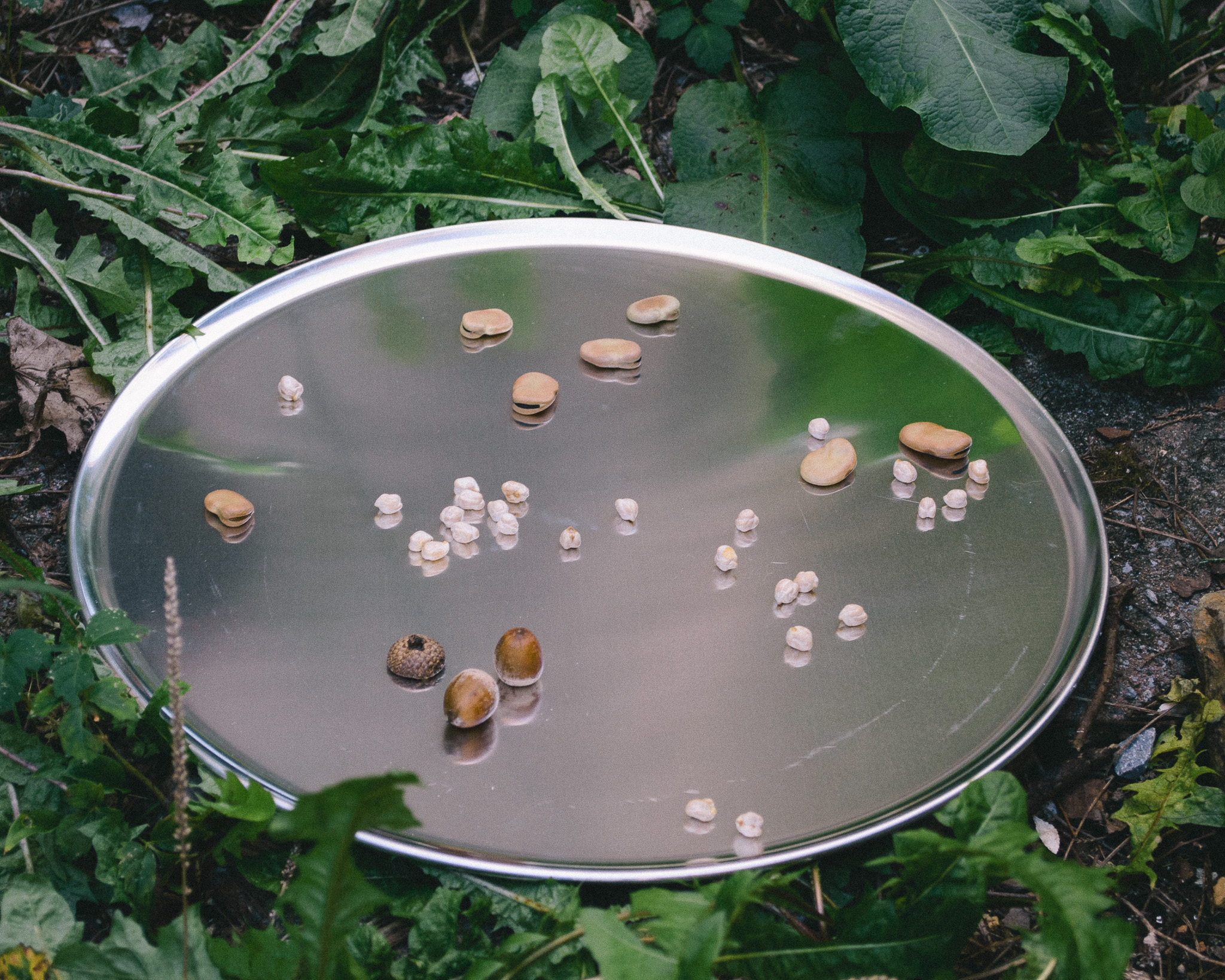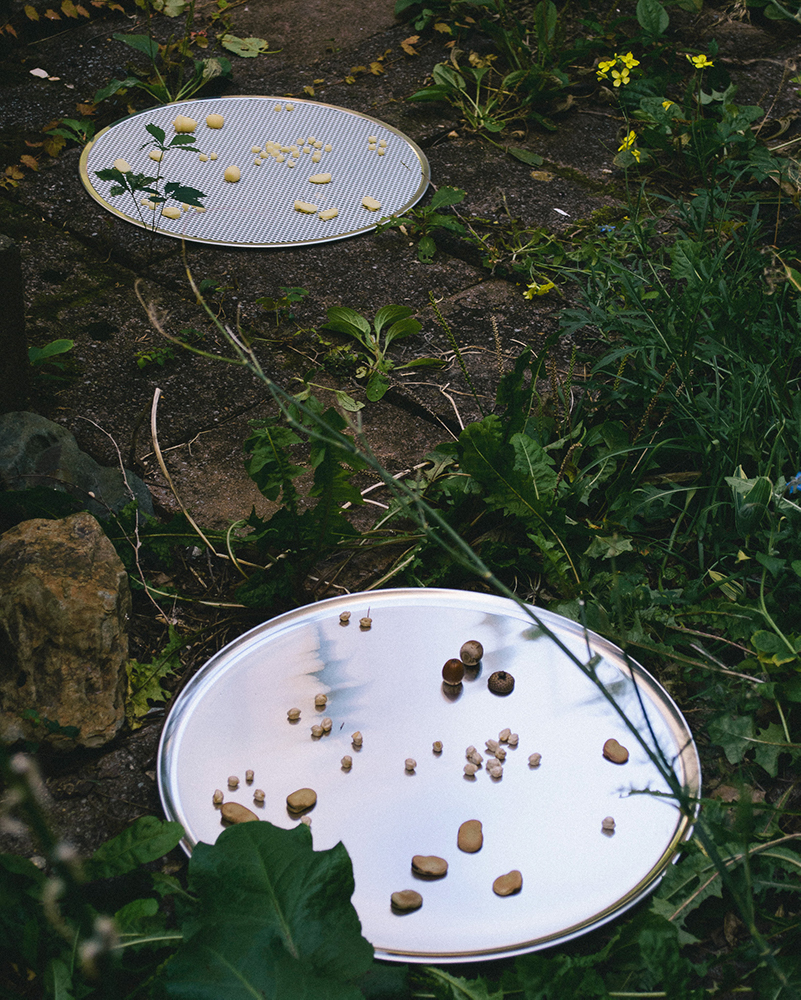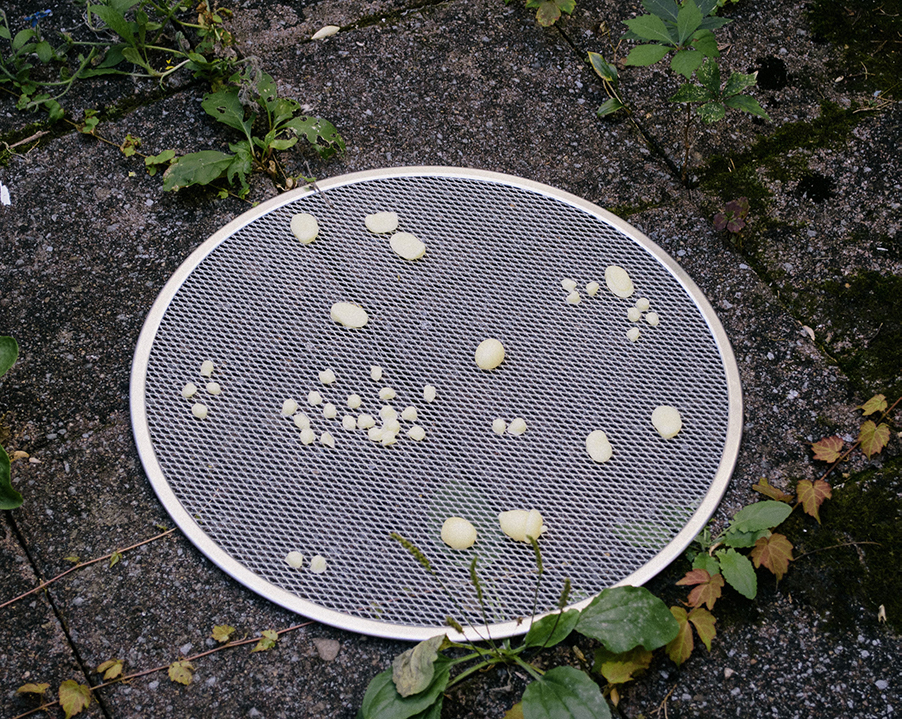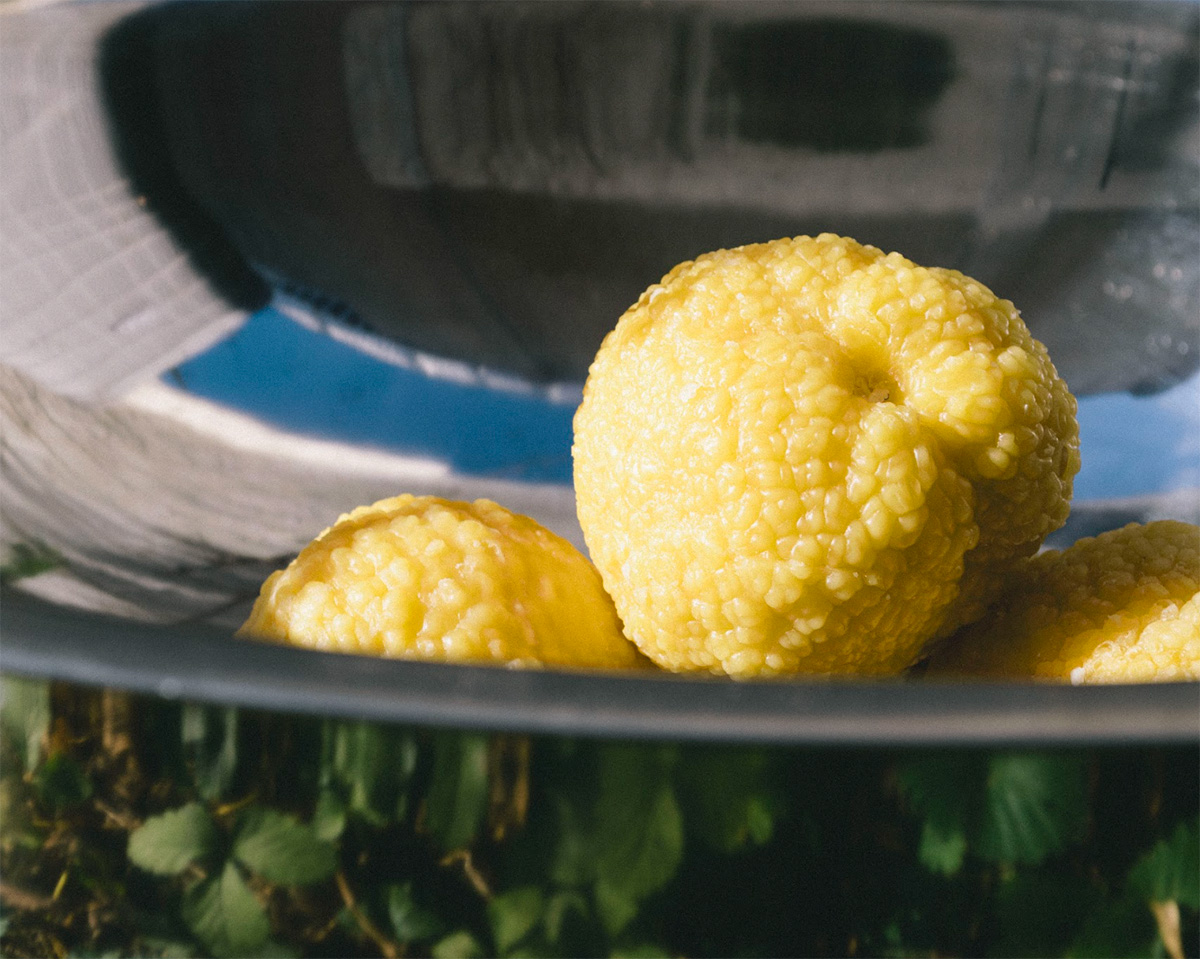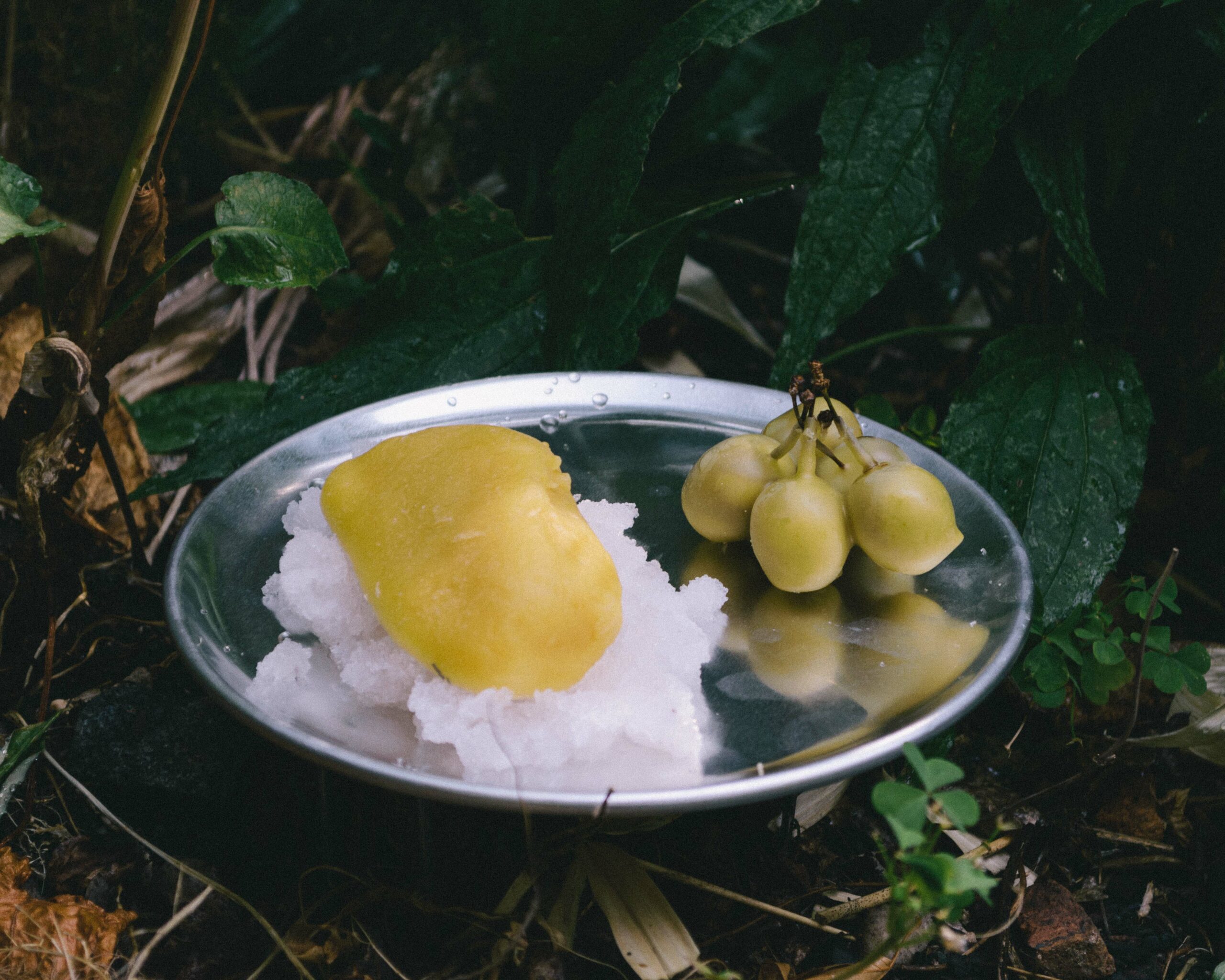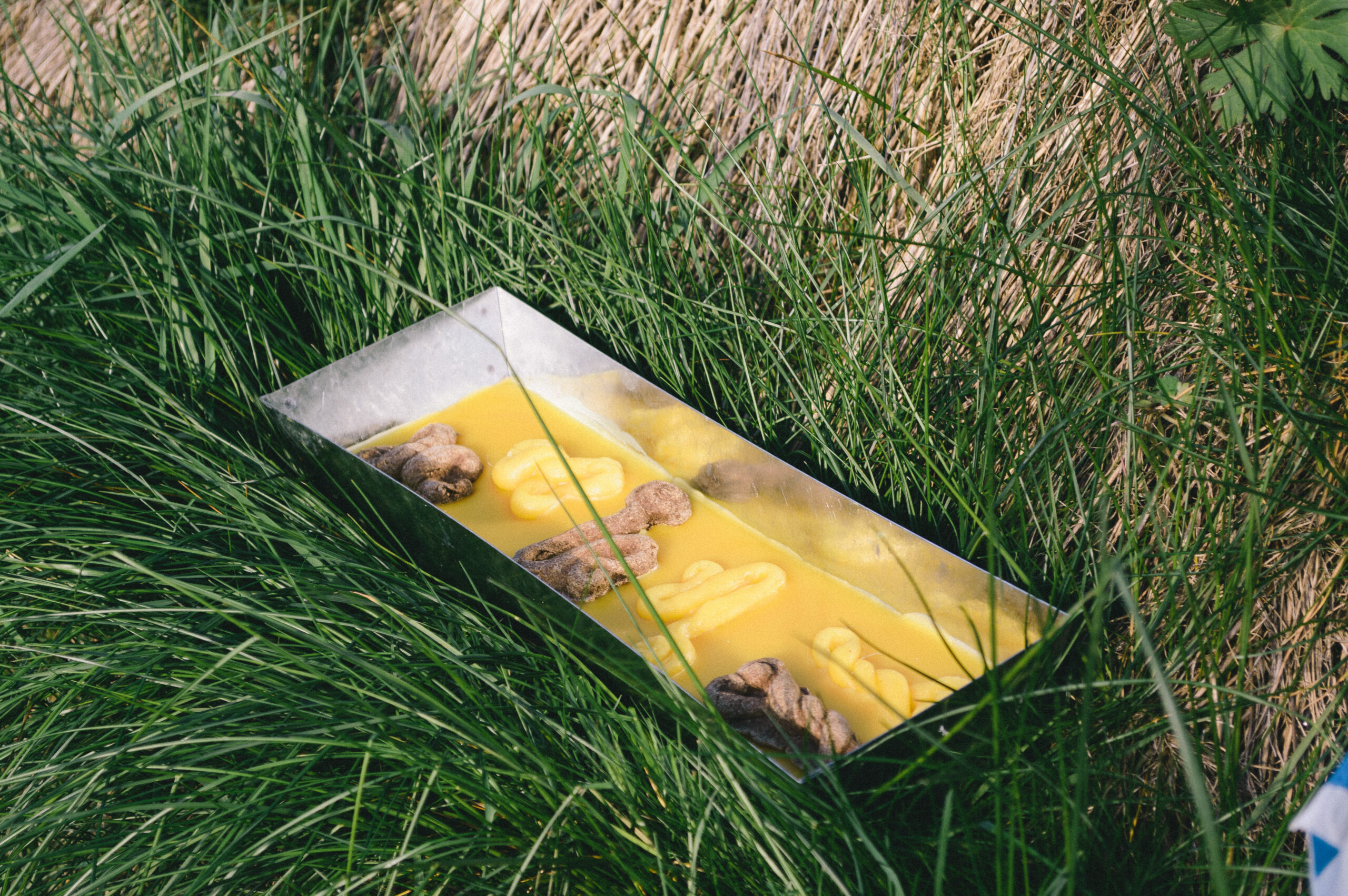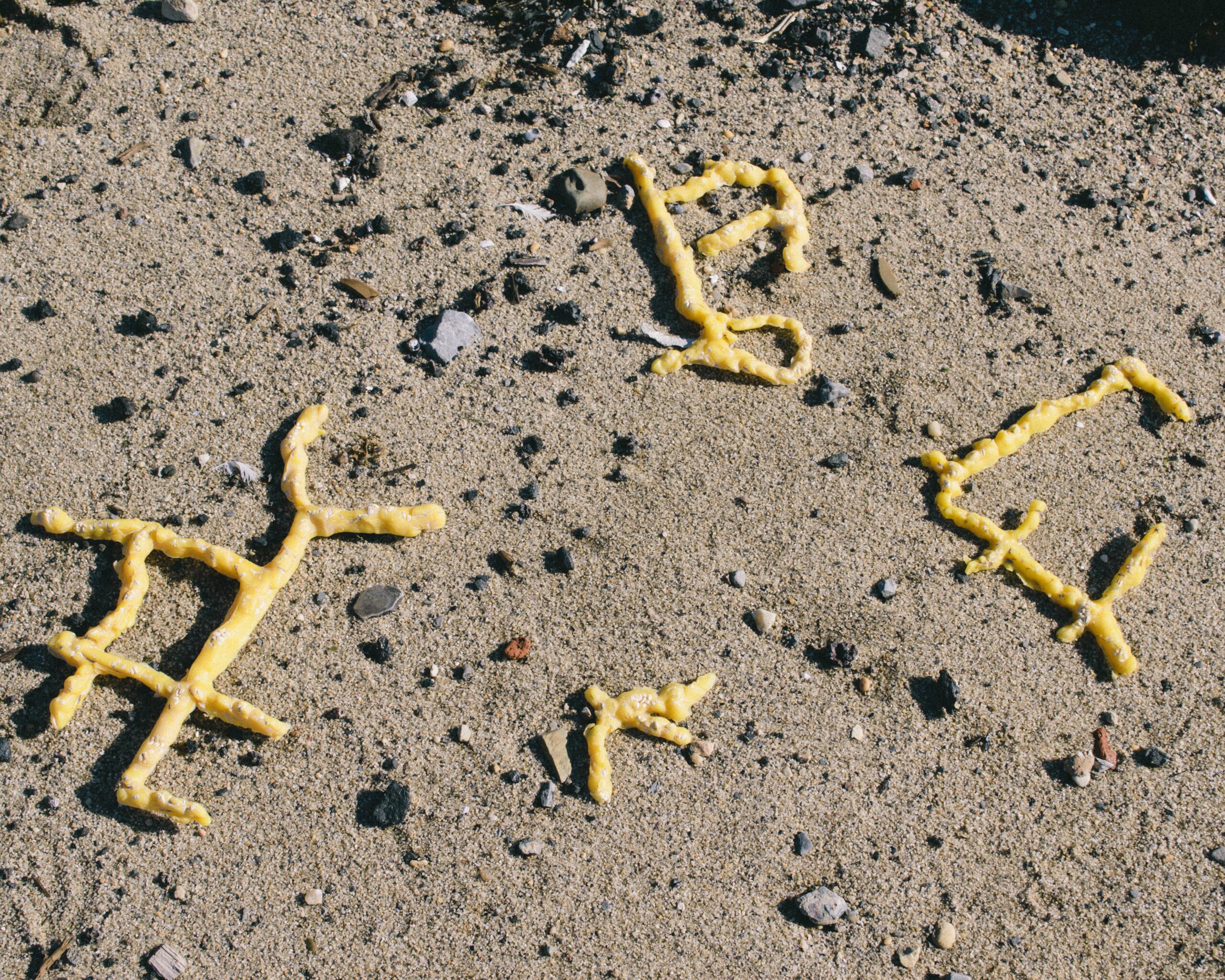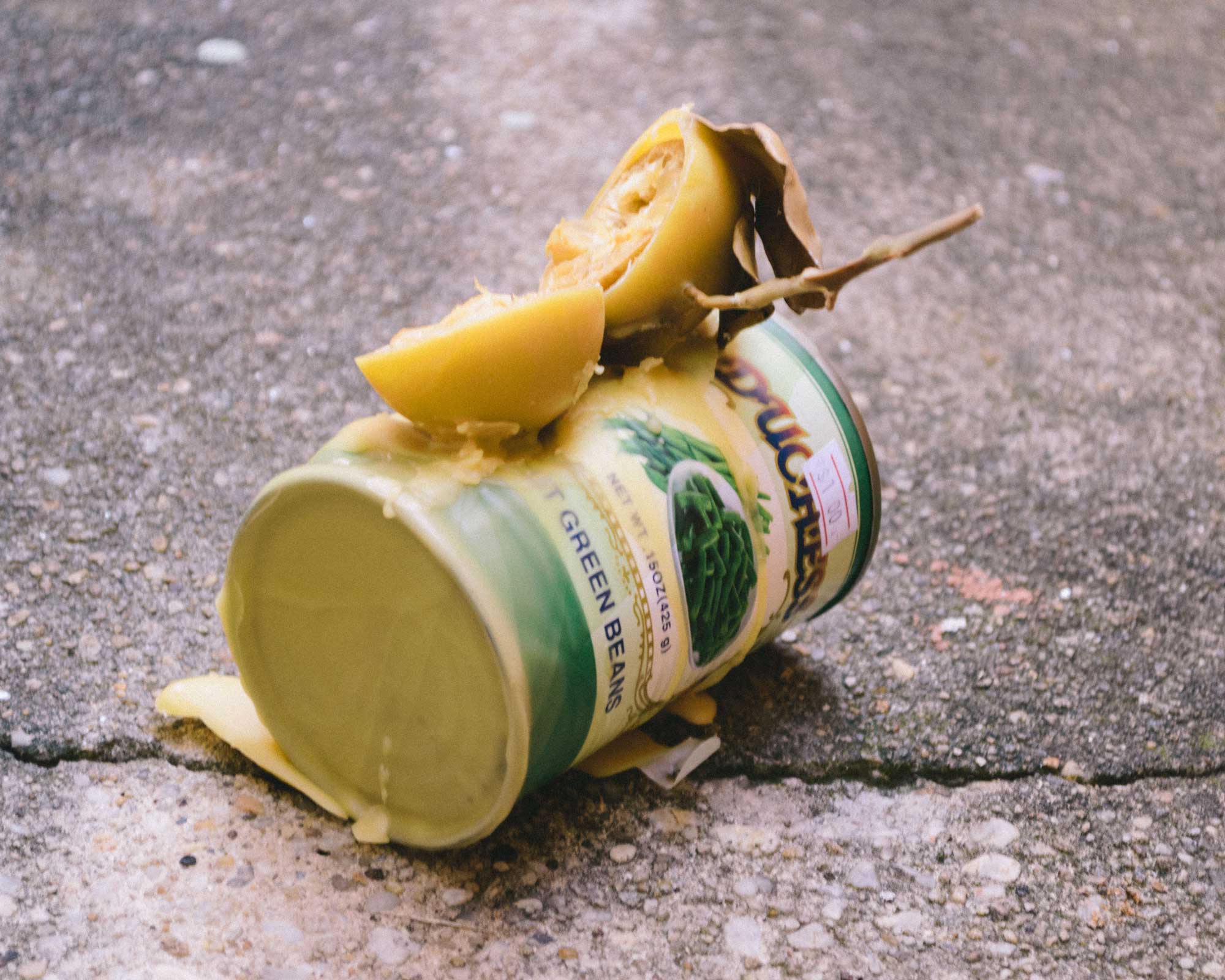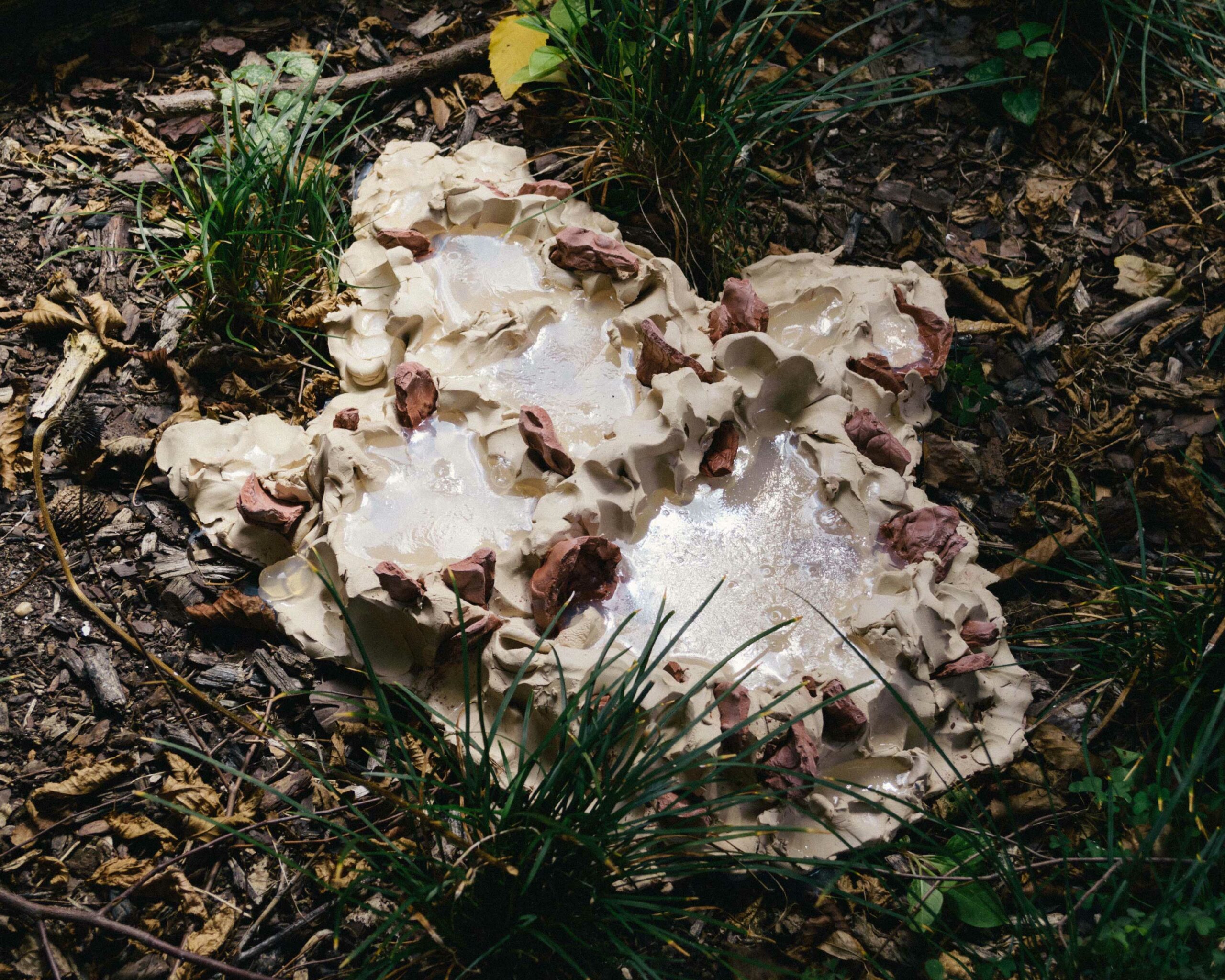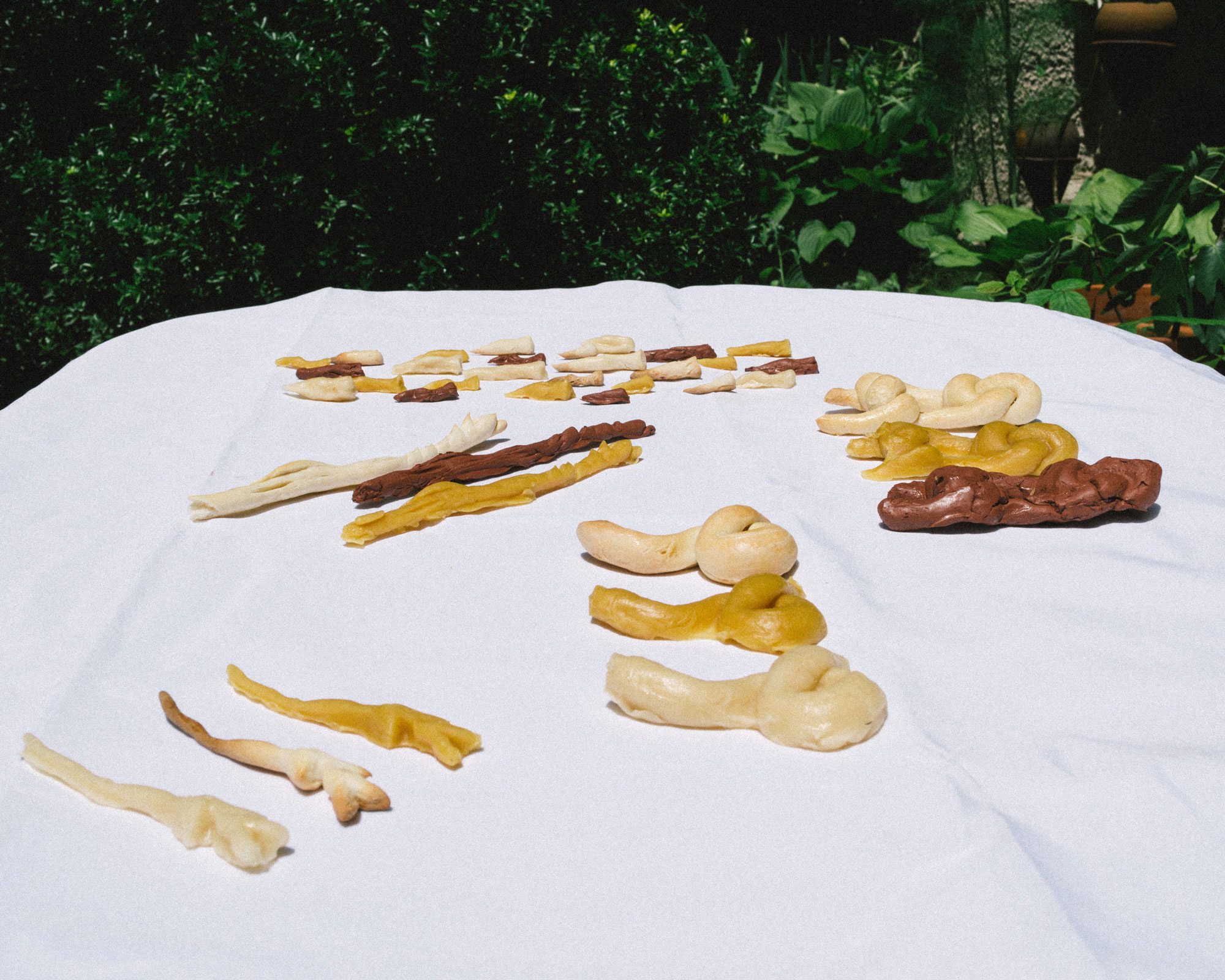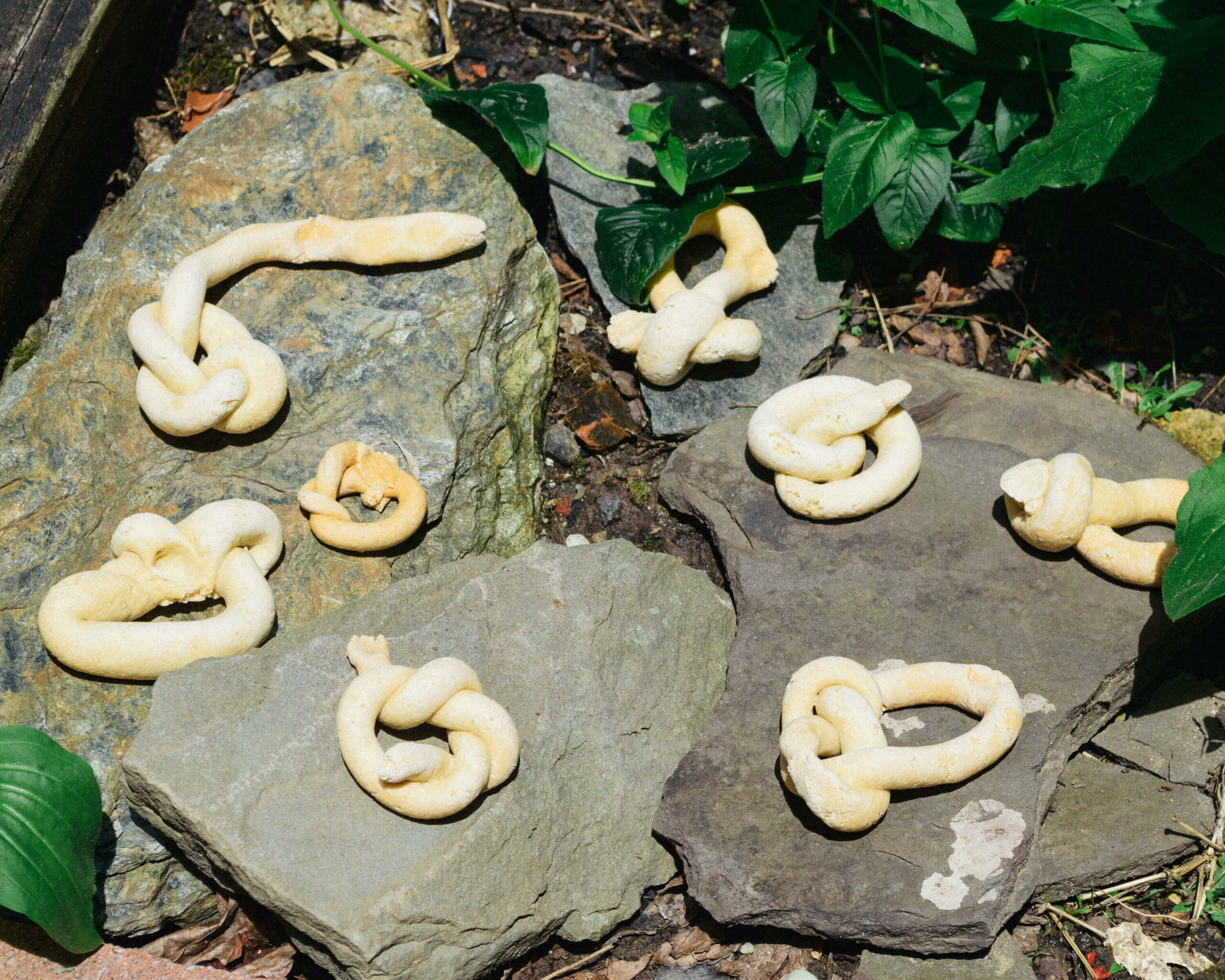In 2015 I encountered the first video. Posted by YouTube account Miniature Space, a faceless Japanese account which seemingly appeared out of thin air, “Mini Food Curry 食べれるミニチュア カレーライス” shows over 4 and a half minutes of an objectively tiny bowl of Japanese curry and rice being made. Carrots and potatoes are peeled, sliced, and diced by ostensibly “normal” sized hands using miniature chef’s knives. Mise-en-place prepared, the large hands light a disc of sterno fire gel (the kind used for fondue pots or when camping) with a standard-sized lighter under a miniature pot. Behind the pot is a miniature wooden dining table with matching chairs, and a second more ornate stove with a container for coffee (it reads ‘kaffee’). A slick of oil is poured from a tiny ceramic pitcher and the vegetables and chicken are fried, handled with a metal spatula no more than an inch in length. A second pot is filled with water from a teapot twice its size while the seemingly disembodied hands dissect a standard curry cube into pieces proportional to the 40 or so ml of water. Vegetables and chicken are added back to the water along with the partial curry cube and cooked until thickened. The curry is plated over a proportionally miniature plate of rice. A hand scoops up a bit with a spoon large enough only to hold a grain or two at a time, tilting the spoon to camera but never taking a bite: that is to say, the spoon never leaves the frame and the cook remains faceless. The creator, Miniature Space, is by most accounts the first of its kind, and a pioneer of the format, racking up millions of views (the most popular video on the channel, a more elaborately miniature curry video, has 82 million) in its first years. In one of the first and perhaps the only interviews with the unnamed person behind the account, he shares that the idea originated, perhaps unsurprisingly, from YouTube accounts dedicated to playing with toys in a similar manner. He shared, “Miniature food-cooking movies have never been done before. I get my inspiration from everyday life and cooking.”
Food is perhaps the ideal material to render in miniature. The edible miniature invites you to possess, consume, and embody it in complete dominance. The manipulation of scale encourages a state of disorientation, one that demands a moment of pause around the act of consumption. This dynamic is best summarized by French philosopher Gaston Bachelard, who writes in The Poetics of Space, “The cleverer I am at miniaturizing the world, the better I possess it. But in doing this, it must be understood that values become condensed and enriched in miniature.” Control is an unavoidable dimension of the miniature. Through digestion, the miniature offers control over the object, of one’s understanding of the object, and a controlled way to experience the fantasy of the scale shift.
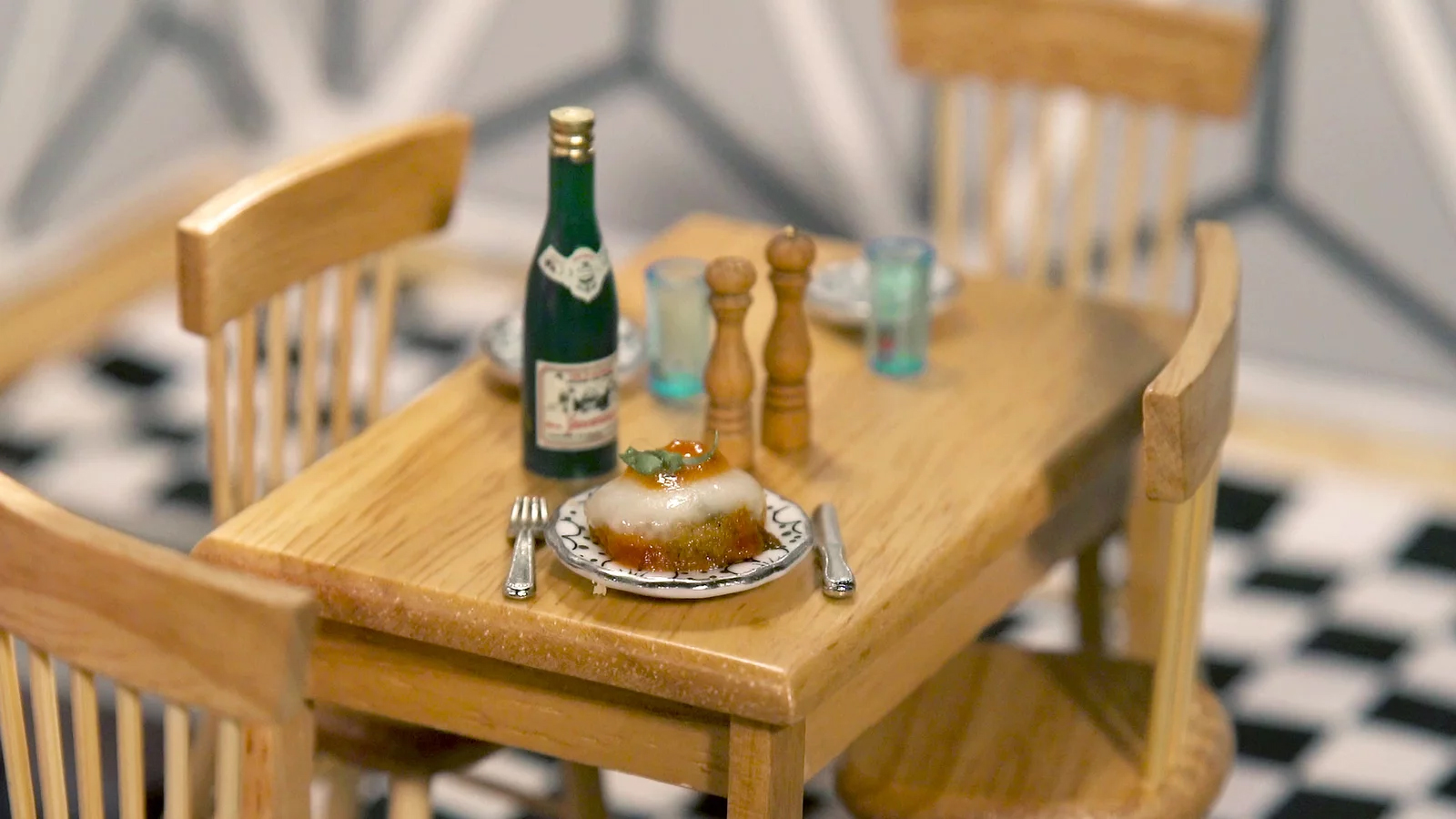
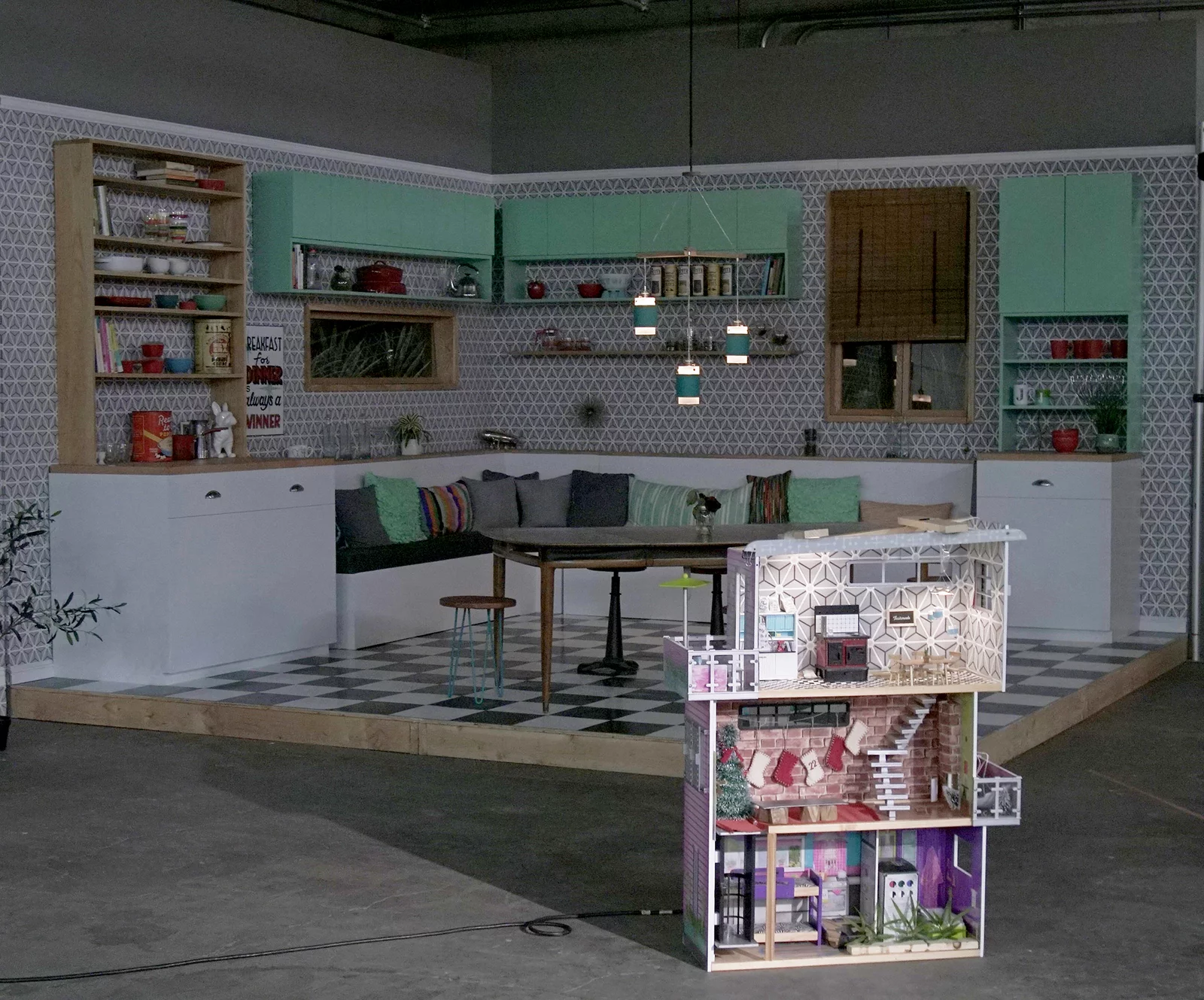
The, admittedly charming, problem with tiny foods is multifold. Miniature foods do not satisfy the primary nutritional and survival function of cooking and eating. A tiny cake is both too small to take a bite from and too small to fill you up. To eat a single “real” cake one must eat innumerable tiny cakes to feel anything close to the sensation of fullness. Here, the relationship between unit and size is compromised in service of pure sensation and the appreciation of just how small a sandwich possibly can be. Similarly, the cooking of tiny food is compromised by a shuffling of priorities, that is, to be tiny above all else. On mini-cooking TikTok and YouTube accounts, kitchens are appointed with the expected appliances (tiny stove, fridge, and so on) and on the counter or stove are more or less proportional pots and pans. Upon closer inspection, the pots and pans and spoons and flowers on the counter begin to seem not quite of the same worlds. At least in terms of scale. A wooden spoon is dwarfed by the stove which reveals itself to be a tea candle or hacked camping stove or lighter while the bowls and pots vary wildly in proportion. Just as the illusion begins to waver, a large human hand will enter the frame to crack an egg (quail, usually) or to chop a cherry tomato into a small dice with an even smaller cleaver. A question inevitably rises about sourcing. Does the existence of a tiny tomato imply a tiny supermarket just down the tiny road from this tiny kitchen? The big hands admit to the artifice and as you hold your phone your hands become their hands as they, in a few efficient and fast cuts of footage, prepare a shockingly small stew or fried egg or cheesecake. The music (when there is any) is somewhere between soothing and childish, verging on repetitive, as the huge hands deftly move around their small kitchen, more demonstration than narrative.This use and manipulation of shifting scales of relative proportion moves the miniature into the realm of the weird, as Mark Fisher describes it, “As we shall see, the weird is that which does not belong. The weird brings to the familiar something which ordinarily lies beyond it, and which cannot be reconciled with the “homely” (even as its negation). The form that is perhaps most appropriate to the weird is montage — the conjoining of two or more things which do not belong together.”1
- 1. Mark Fisher, The Weird and the Eerie
A miniature implies an original of some kind: a referent whose existence establishes and situates the miniature in scale. Etymologically, miniature derives from the Italian miniatura which referred to illuminated manuscripts, the logic being that the use of the word simply sprung from those manuscripts and the illustrations therein being considered in relation to larger paintings. The miniature, with the specter of its original referent, seeks to reproduce specific effects of the original while abandoning others predicated upon its size. The first change that occurs is how an object is used. Hierarchies of the ergonomics of a tiny spoon or fork in a so-called normal hand become completely warped, their function becoming the maintenance of the small-big relationship rather than efficiently transporting food from plate to mouth. Miniature food in this way functions practically (even if the process and effect is decidedly impractical) but the videos and dedicated accounts and creators wield the miniature in such a way that transforms them from relational objects consisting of ingredients, tools, and processes into images. In their proliferation, these videos and images degrade these lively relations: “Objects, on the other hand [as opposed to images], are the original—they “mean” something, “do” something, through their own existence in the here and now. They remind us that mimesis is not the only goal of representation.”2
- 2. The Tiny and the Fragmented: Miniature, Broken, or Otherwise Incomplete Objects in the Ancient World, S. Rebecca Martin and Stephanie M. Langin-Hooper
Unlike the illuminated manuscript, miniature or tiny cooking and its logic springs from a longstanding attraction to what we would now call “cute”, a word which links the small or abbreviated with the enchanting. Hannah Arendt describes a “Modern enchantment with “small things,””(The human condition, Hannah Arendt) as a coping mechanism in the face of industrialization and the increasing speed by which familiar objects disappear into the cycle of industrialization as fodder for it. This enchantment and the imposition of cuteness onto objects only serves to diminish them further, to dominate them and to fetishize and assign value (in the case of these videos, actual monetary value) that domination. Or as Sianne Ngai positions it, “Revolving around the desire for an ever more intimate, ever more sensuous relation to objects already regarded as familiar and unthreatening, cuteness is not just an aestheticization but an eroticization of powerlessness, evoking-tenderness for “small things” but also sometimes, a desire to belittle or diminish them further.”3
- 3. Our Aesthetic Categories: Zany, Cute, Interesting, Sianne Ngai.
These miniature foods then enter the space of hyperreal as the referents themselves fall away and the effect (and affect) of the very tiny expands to fill a disproportionate amount of cultural space. While Baudrillard understands the miniature as an embedded component of the simulation and by extension the hyperreal, Umberto Eco’s explorations of hyperreality also offer us a more coherent understanding of the hyperreal, one that perhaps describes miniature food and cooking media most aptly, and that is the term “Absolute Fake” in which “The sign aims to be the thing, to abolish the distinction of the reference, the mechanism of replacement.”4 Eco uses Disney’s parks in particular to exemplify and describe the term, spaces that parlay in the miniature (and replacement) to maximum effect (see also Mythmaking and Magic in Votive Foods for more on Eco and Disney). After all, in a Disney park you can have Moroccan food for lunch, journey to another planet, and take an Amazonian river cruise in one day. In the case of miniature cooking, the Absolute Fake functions to replace the sign of cooking, that is the gestures, accessories, and routines but in such a way that the product being consumed (the videos or even the miniature cooking tools) is not of nutritional value, it is a monetizable and marketable commodity that initiates a cycle of consumption without satiety.
- 4. Travels in Hyperreality, Umberto Eco.
The edible miniature invites you to possess, consume, and embody it in complete dominance.
The efforts to exert control over the tiny is perhaps nowhere as evident as it is in human relations with microbes. In the microbial world, smallness functions in a way that the smaller you are the fewer you are or the fewer you have, smallness not of size but numbers and population. The question still remains of the scale of the agents and their proportions to their visible and known effects. The etymological path of the term “microbe” is predicated upon a common misapplication of the Greek “bios” which does mean life, but more accurately refers to the life-span. Micro from the Greek “mikros” meaning small is combined with bios to produce a small life which, etymologically speaking, is closer to a short life (small in length of time rather than volumetric size). In this way, relative scales of time become embodied in the microbial, for what exactly constitutes a small or short life anyway? The source of both the appeal and fear of the microbial world is the existence of entire communities which are functionally invisible to us: a microbiome becoming an entire cosmos. The microbial world is imbued with potential for until something is rendered or discovered or quantified it could very well contain the equivalent potential of another Earth.
Microbes appeal to laypeople and scientists for exactly this latent potential and unfathomable tininess of their surround webs of relations: “It is this relational angle that has made microbes newly attractive – good to think and work with – because scientists can imagine microbes to be full of unexpected, uncharacterized possibility as well as pliable to cultural projects. Microbes have become tokens of potentiality. Like model organisms, microbes are ‘both natural and artificial objects’… observe that the very word microbe (‘small life’, more or less) implicates artifice, because of the culturally crafted technological measures of scale and means of observation needed to make microbes manifest…”5 The jar of kimchi or a well-marketed probiotic supplement become equally potentially powerful and transformative to an eater (consumer) for whom the microbial world has never been truly visible.
- 5. The perils and promises of microbial abundance: Novel natures and model ecosystems, from artisanal cheese to alien seas, Heather Paxson and Stefan Helmreich.

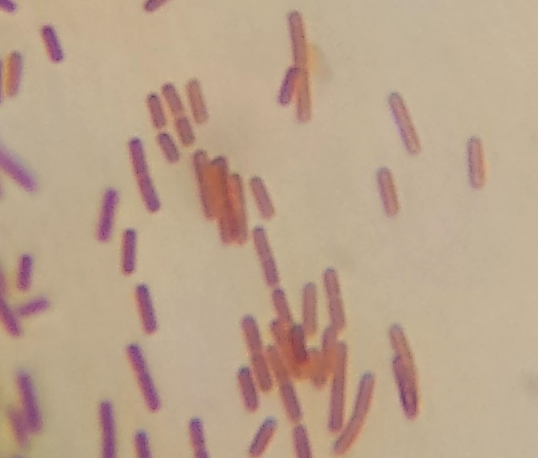
The specifics of the environments in which these microbes flourish becomes less interesting than the microbes themselves, leading to fundamental misunderstandings of our relationships to the microbes living in, on, and around us. We are without question in dynamic relation with these microbes, but the precise nature of that relationship changes a great deal and is not uniformly beneficial or even “natural”. For “There are no miniatures in nature; the miniature is a cultural product, the product of an eye performing certain operations, manipulating, and attending in certain ways to, the physical world.”6 The temptation becomes to see ourselves simply as microbial farmers or shepherds, to misunderstand the dynamics of the human holobiont. The holobiont is an ecosystem consisting of microbes and a host and describes a particular range of parasitic and symbiotic relations. What is interesting about the holobiont is the potential positioning of the human as a site rather than an individual. In this case, the miniature has the potential to release the human from an imperative to control and manipulate, and instead to settle into the role of landscape or place for other agents to act and live their micro-lives.
- 6. On Longing: Narratives of the Miniature, the Gigantic, the Souvenir, the Collection, Susan Stewart
Common to the various uses and scales of the miniature is the disappearance or perceived absence of labor that undergirds the real world. This absence occurs with the introduction of the fantasy of the tiny, the otherworldly and hyperreal quality which renders the miniature in such a way to seem all but a product of spontaneous generation. The perceived infinite potential of the miniature is indeed not so infinite but within its purview is the opportunity to encounter non-human scales of space and time that force a reckoning of a normative adult human experience to include the tiny and invisible ecologies and communities just outside of that framework that do not abide by what are presented as absolute rules and measurements of scale.
⦂ 1:10 Japanese-Style Curry ⦂
0.4 Tbsp. unsalted butter
.025 cup all-purpose flour
.025 cup S&B curry powder
.3 Tbsp. oil
Kosher salt
.1 clove of garlic, chopped
.1 in piece of ginger, grated
.1 large onion, chopped
.1 potato (or one baby potato), peeled and chopped
.1 medium carrot (or one baby carrot), peeled, sliced
.2 celery stalks, sliced
.6 cups vegetable broth
1 oz. squash peeled and chopped
.1 apple, grated
Cooked short-grain japanese rice (for serving)
Melt butter in a pot over medium heat. Whisk in flour and cook, whisking continuously, until roux is light golden brown, 5–8 minutes. Stir in curry powder and stir. Cook until evenly distributed and fragrant. Set aside.
In another pot, heat oil and briefly sauté vegetables, garlic, and onion until lightly browned and slightly softened. Add broth to cover, then the curry roux and grated apple. Season with salt, soy, ketchup, and/or chilies to taste. Allow to simmer until vegetables are cooked and the curry has thickened. Serve (in proportionally small portions) over rice.
- 1. Mark Fisher, The Weird and the Eerie
- 2. The Tiny and the Fragmented: Miniature, Broken, or Otherwise Incomplete Objects in the Ancient World, S. Rebecca Martin and Stephanie M. Langin-Hooper
- 3. Our Aesthetic Categories: Zany, Cute, Interesting, Sianne Ngai.
- 4. Travels in Hyperreality, Umberto Eco.
- 5. The perils and promises of microbial abundance: Novel natures and model ecosystems, from artisanal cheese to alien seas, Heather Paxson and Stefan Helmreich.
- 6. On Longing: Narratives of the Miniature, the Gigantic, the Souvenir, the Collection, Susan Stewart
